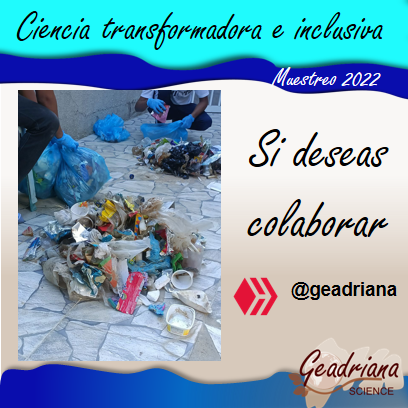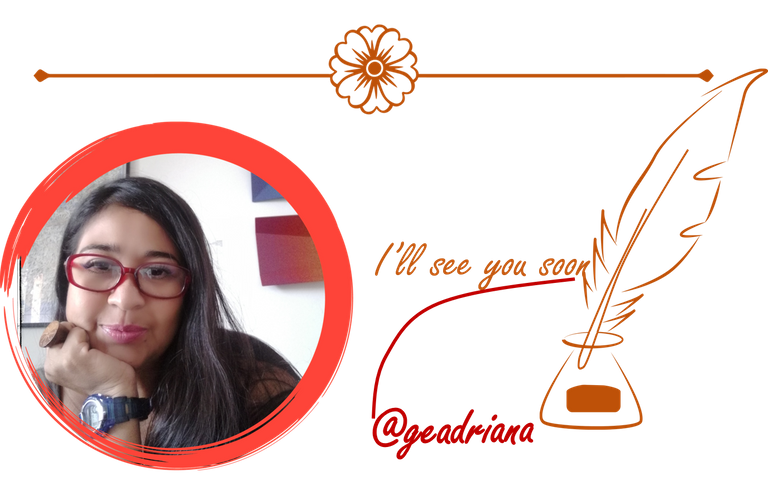¡Buena Lectura!

¿Por qué estudio microplásticos?
Desde que inicié a trabajar en este tema he entrenado alrededor de 30 estudiantes 8 profesores, he desarrollao conferencias, presentaciones, incluso en la #Blockchain aunque sigo a la orden para conversar en cualquier espacio posible. Adicionalmente,
he dirijido diferentes campañas de muestreo y proyectos a nivel de bachillerato y universitario (trabajos de grado).
No obstante, al ver la problemática me salí un poco del entorno científico y llevo el mensaje en la radio en entrevistas y en comunidades. El hecho de que existan los microplásticos en el ambiente ya es un problema muy difícil de resolver, por eso comencé a trabajar también con basura marina para conocer que exactamente está llevando a nuestras costas.
Existe la necesidad de conocer Cuál es el estado de la contaminación por plásticos en nuestro país, Venezuela, sobre todo sin consideramos que la costa venezolana cuenta con una línea de Costa bastante amplia que alcanza más de 3000 kilómetros. Entonces, saber cual es la densidad de la basura plástica en las costas, la características y la cantidad de la partículas plásticas de diferentes tamaños e incluso si es posible su composición química nos permitirá entonces hacer algunas inferencias sobre las fuentes y a su vez diseñar propuestas para frenar o minimizar la contaminación por plásticos en las costas y los océanos a nivel global porque no existe fronteras entre los diferentes mares y océanos.

La ciencia es muy importante

A nivel científico se cuenta con muchos estudios publicados que demuestran la presencia de microplásticos en sedimentos marinos, aguas e incluso en la trama trófica; es decir que nosotros podemos estar consumiendo plásticos cuando ingerimos organismos marinos. Pero no solo las poblaciones costeras extarían expuestas, sino que se ha reportado que la fuente de exposición más importante es el aire.
En el caso de mi hermoso país Venezuela hay mucho vacío de información, no existe una investigación fuerte y sostenida respecto al tema. Algunos investigadores estamos realizando esfuerzos para levantar información y hacer ensayos pese alas dificultades operacionales.
Mi contribución se ha centrado en el estado Sucre sobre todo, pero desde el año pasado esa experiencia adquirida y en una implementación mejorada y adaptada a la realidad, en la cual empleo sencillez, sin perder la rigurosidad y lo específico de la información, esto para garantizar la continuidad bajo las condiciones que tenemos. Inicié el primer levantamiento de información sistemática en Lechería el año pasado en cuatro playas, siendo el único estudio que se está haciendo de esta forma en Venezuela y este fin de semana vamos a repetir los puntos de muestreo en otra temporada para hacer las comparaciones correspondientes.
Pese a que no dispongo de financiamiento con mis recursos y la colaboración de mis familires y algunos amigos logramos llevar a cabo el primer muestreo. Ahora me lanzo a la aventura sin contar con los recursos, por eso mientras esté en campo estaré en medidad de lo posible solicitando apoyo y divulgando información por varios medios a fin de obtener los recursos.
Aunque aun no tengo todo completo me lanzo a la aventura porque la temporada de interés se acaba en marzo, así que no lo podemos perder. Aunque he aplicado a varias subvenciones como estilamos los científicos no he obtenido hasta ahora alguna. Así que con mi equipo de trabajo me voy el jueves a Anzoátegui a iniciar las actividades allá se suman dos profesionales geocientíficos al equipo, María Virginia Carvajal y Andrés Casalins, que son de mucha utilidad y apoyo y con los que comparto no solo el interés científico, sino también de conciencia y responsabilidad ambiental. Por ello, no dejaremos de lado la divulgación en diferentes medios.
La idea es que cada día la población esté más informada y y que puedan promoverse los cambios que tanto necesitamos desde las bases y con fundamentación científica.
Luego de la toma de muestras viene el trabajo de laboratorio para llevar a cabo los análisis es un trabajo al detalle y requiere muchas horas hombre. Un vez concluida esta fase y mientras sigo buscando apoyo financiero, al regreso deseo juntar voluntades y recursos para replicar experiencia en Cumaná y Carúpano del estado Sucre, para complementar la información para apoyar la toma de decisiones a futuro.
Por eso yo deseo contar con su apoyo


English version
Good reading!

Why study microplastics?
Since I started working on this topic, I have trained around 30 students and 8 teachers, I have given conferences, presentations, even on the #Blockchain, although I am still willing to talk in any possible space. Further,
I have directed different sampling campaigns and projects at the high school and university levels (graduate work).
However, when I saw the problem, I left the scientific environment a bit and carried the message on the radio in interviews and in communities. The fact that microplastics exist in the environment is already a very difficult problem to solve, which is why I also started working with marine litter to find out what exactly it is bringing to our shores.
There is a need to know what is the state of plastic pollution in our country, Venezuela, especially without considering that the Venezuelan coast has a fairly wide coastline that reaches more than 3000 kilometers. Therefore, knowing the density of plastic litter on the coasts, the characteristics, and quantity of plastic particles of different sizes, and even, if possible, their chemical composition, will then allow us to make some inferences about the sources and, in turn, design proposals for curb or minimize plastic pollution on the coasts and oceans globally because there are no borders between the different seas and oceans.

Science is very important

At a scientific level, there are many published studies that demonstrate the presence of microplastics in marine sediments, waters, and even in the food web; that is to say that we can be consuming plastics when we ingest marine organisms. But not only coastal populations would be exposed, but it has been reported that the most important source of exposure is the air.
In the case of my beautiful country, Venezuela, there is a lot of information gap, there is no strong and sustained investigation on the subject. Some researchers are making efforts to gather information and carry out trials despite operational difficulties.
My contribution has focused on the state of Sucre above all, but since last year that experience acquired and an improved implementation adapted to reality, in which I use simplicity, without losing the rigor and specificity of the information, this to guarantee continuity under the conditions we have. I started the first systematic information survey in Lechería last year on four beaches, being the only study that is being done in this way in Venezuela, and this weekend we are going to repeat the sampling points in another season to make the corresponding comparisons.
Despite the fact that I do not have financing, with my resources and the collaboration of my family and some friends, we managed to carry out the first sampling. Now I am embarking on the adventure without having the resources, so while I am in the field I will be as much as possible requesting support and disseminating information through various means in order to obtain the resources.
Although I still don't have everything complete, I'm going on an adventure because the season of interest ends in March, so we can't lose it. Although I have applied for several grants, as we scientists do, I have not obtained any so far. So, with my work team, I am going to Anzoátegui on Thursday to start the activities. There, two geoscientists join the team, María Virginia Carvajal and Andrés Casalins, who is very useful and supportive and with whom I share not only the scientific interest but also environmental awareness and responsibility. For this reason, we will not neglect disclosure in different media.
The idea is that every day the population is more informed and that the changes that we so much need can be promoted from the grassroots and with scientific foundations.
After taking samples comes the laboratory work to carry out the analysis. It is a detailed job and requires many man-hours. Once this phase is over and while I continue to seek financial support, upon my return I wish to gather wills and resources to replicate the experience in Cumaná and Carúpano in the state of Sucre, to complement the information to support future decision-making.
That's why I want to count on your support



The rewards earned on this comment will go directly to the person sharing the post on Twitter as long as they are registered with @poshtoken. Sign up at https://hiveposh.com.
Un mega abrazo, me alegra que prosigas con los avances de la ciencia en este día como cualquier otro, más que todo porque eres un ejemplo a seguir de una mujer inspiradora en los campos de la ciencia.
Congratulations @geadriana! You have completed the following achievement on the Hive blockchain and have been rewarded with new badge(s):
Your next target is to reach 40000 upvotes.
You can view your badges on your board and compare yourself to others in the Ranking
If you no longer want to receive notifications, reply to this comment with the word
STOPCheck out the last post from @hivebuzz:
Support the HiveBuzz project. Vote for our proposal!
Feliz día amiga y saludos bendiciones